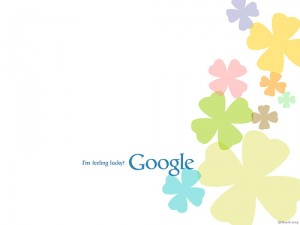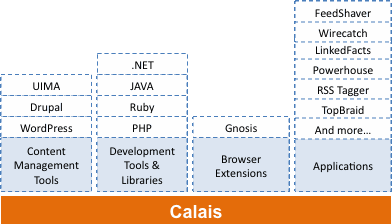Chris Sparshot at IBM has posted a great preso on their Social Media project:
Thanks to Tomoaki Sawada for finding this one
Chris Sparshot at IBM has posted a great preso on their Social Media project:
Thanks to Tomoaki Sawada for finding this one
 Yesterday I downloaded Microsoft’s Live Writer after Neville Hobson gave it a plus. Trouble is it downloaded not only the Blogging tool but a villain’s swag bag of other goodies too. I now need to find a new ’round-2it’ to unpack them and see what’s on offer. As the angel fish are looking fed up and after a big water change I don’t think this will happen soon.
Yesterday I downloaded Microsoft’s Live Writer after Neville Hobson gave it a plus. Trouble is it downloaded not only the Blogging tool but a villain’s swag bag of other goodies too. I now need to find a new ’round-2it’ to unpack them and see what’s on offer. As the angel fish are looking fed up and after a big water change I don’t think this will happen soon.
Another big factor are all the WordPress Plugins I’m now using, especially the SEO and Tagging ones. These have now become key factors in my publishing as I try and increase readership and reach (OK get Google to find me) and ensure that my content is tagged right for Calais/SemanticProxy.
And then there’s RSS. The integration between Flock and RSS is the best I’ve seen. The fact I can flip from a side bar of feeds to my RSS summary pages is a big plus for me when I’m writing my Blog. It’s then a case of copying the quotes and URLs from that browser to Chrome. Well that would be OK if there wasn’t a big big problem here.
What I find is that if I run Chrome and Flock simultaneously then the old Dell box I’m using grinds to a halt. There seems to be some sort of resource hogging going on between them and Chrome loses the battle. Chrome is an app I like, but maybe it’s a bridge too far for Google.
 Internetnews wonder this too and base this not on the fact that it makes an old dicky PC run so slow it’s in reverse, but on the fact that it is such a new app. Chrome they point out was in beta for just 4 months before going gold. ‘Why so rash for Google?’ they ponder and come up with the answer that Chrome is not only part of Google’s secret operating system, it’s the actual UI for the OS. And perhaps they wonder, perhaps…
Internetnews wonder this too and base this not on the fact that it makes an old dicky PC run so slow it’s in reverse, but on the fact that it is such a new app. Chrome they point out was in beta for just 4 months before going gold. ‘Why so rash for Google?’ they ponder and come up with the answer that Chrome is not only part of Google’s secret operating system, it’s the actual UI for the OS. And perhaps they wonder, perhaps…
Perhaps Google’s browser is a new UI to the cloud.
And they’re not alone here. PC Advisor advise us that Android is already an OS and that Chrome takes us nearer to…?well the cloud:
By so carefully binning the user agent string from its OS, Google has ensured that other, less sensitive data is retained. Or to put it another way, it’s the perfect security setup for an operating system based in the cloud.
 What’s more…it’s all Free. Woo Yay for the ‘great unwashed’ say PC Advisor:
What’s more…it’s all Free. Woo Yay for the ‘great unwashed’ say PC Advisor:
Users tend to be a great deal more forgiving of software that’s free, than that they’re forced to shell out a mint for.
CNET are of a like mind and point out that it complments Googles already impressive swathe of freebies. Add to that a canny observation from the Google Operating System Blog that Google are conducting a highly aggressive promo for Chrome. Now it’s out of beta so quickly they point out, it can be bundled with those other freebies that people want such as their toolbar or Google Earth. This distribution as we learned earlier could be done with some crafty fast caching…
 Thus in a jiffy, Google have set up all the means to distribute via a 2-tier fast-track, a spanking brand new OS, with a funky UI via the cloud and for the cloud.Let’s just hope it’s ready when they release it.
Thus in a jiffy, Google have set up all the means to distribute via a 2-tier fast-track, a spanking brand new OS, with a funky UI via the cloud and for the cloud.Let’s just hope it’s ready when they release it.
There’s a great post on TwiTip called “Construct your own ‘Top 10 Must Follow’ List as it relates to your own Niche”.
Which is what I’ve done: my niche is internal comms and all thangs 2.0 and I’ve found some of the key players on Twitter.
‘Ten People all Internal Communicators Should Follow on Twitter’
But it’s not up to scratch at all, as I’ve only got 6 peeps. So who else should be there?
Update: I’ve started a page as a more permanent list…
If there’s someone left out, let me know…
![]() This looks a lot of fun and potential rich uses within the coporation – a Twitter like tool for internal comms called Yammer –http://www.yammer.com/
This looks a lot of fun and potential rich uses within the coporation – a Twitter like tool for internal comms called Yammer –http://www.yammer.com/
The big concern has to be security! Many years ago on a project, I looked at SaaS for internal comms and in one instance we thought a hole might be needed to be made in the Firewall to get the data through, which was a big no-no. Luckily we got round this with https and a lot of converations with the vendor and the security guys.
This service looks like it relies on purely text data being added to the system, but how to ensure that users don’t do anything silly or that the data is encypted?
My motto here is simple – can it be trusted with bank account data? If not, tread with care: I can see enthusiasts jumping in and ruing their acts later…
Following on from John Cleese and Twitter, the judge’s decision turned out not to be final and he’s moved the man to the number 2 spot. The reason being the UK is not a country but a combo. As I recall it’s actually the UK of GB and NI, so if they’d started with GB they would be OK.
But as it happen’d the 14 yr old judge didn’t so the Scots Nationalists kicked up and now Mashable is the No. 1 in Scotland. Kid Tech Guru is reported as telling Mashable that he didn’t expect a Spanish Inquisition… 
Over in America everyone is following Obama’s Tweets, in Poland it’s AndyBeard while in Japan, it’s Weird News. Funny old world, the interweb.

Plugin Tagaroo
This Blog is now supported with the WordPress plugin Tagaroo. This plug-in looks very very tasty. It’s not like your ordinary plugin, oh no. Tagaroo is one small plug in something bigger and that bigger is SemanticProxy.

In the future…
Now if this is all old hat, please leave me a comment on what else I might have missed lately but if not here’s what SemanticProxy aims to make it so:
In the future the entire web will be one giant tightly interconnected information asset. Beyond just publishing information for humans, every site will expose its content in a way that’s readable by machines. Those machines will mix, match, filter and aggregate information to greatly improve things for us humans.
What SemanticProxy aims to do, is to help achieve this by building and supporting apps and plugins such as Tagaroo and its globalised tag machine. Check out their gallery for a synch up with other tools including Drupal.
Calais on my heart
SemanticProxy itself is all form part of an even more ambitious project sponsored by Thomson Reuters called Calais (or OpenCalais in some quarters) They hope going to transform the web as we know it:
We want to make all the world’s content more accessible, interoperable and valuable. Some call it Web 2.0, Web 3.0, the Semantic Web or the Giant Global Graph – we call our piece of it Calais.
What Calais claims to do is create maps of meaning with the meta data in this or any document. The range of its includes is impressive: 
Linked Data Cloud is so sexy
The next big release of all this will be in January. Calais say it’s going to be a big deal and reading the quote below, even if they half-deliver, they’re going to be right!
The Gist: Release 4 of Calais will be a big deal. In that release we’ll go beyond the ability to extract semantic data from your content. We will link that extracted semantic data to datasets from dozens of other information sources, from Wikipedia to Freebase to the CIA World Fact Book. In short – instead of being limited to the contents of the document you’re processing, you’ll be able to develop solutions that leverage a large and rapidly growing information asset: the Linked Data Cloud.
Hermenuetics
Not for one minute do I profess to understand all of this. What interests me is the flow of information and the creation of meaning – the hermeneutics of data. What attracts me is the fact that I can jump right in and play with the technology. I like this interplay between the now of available technology and its interface with Theory.
Internetnews.com have a nice little piece on Twitter’s potential power What Keeps Twitter Chirping Along that’s attracted the attention of VentureBeat: Twitter has made Dell $1 million in revenue. The peep is this quote:
some businesses have discovered that Twitter is an effective way of communicating with consumers. Dell (NASDAQ: DELL) says Twitter has produced $1 million in revenue over the past year and a half through sale alerts. People who sign up to follow Dell on Twitter receive messages when discounted products are available the company’s Home Outlet Store.
VentureBeat speculates on Twitter’s business model and possible premium accounts in the future. Over at Mashable they’re less convinced: Twitter May Have Made Dell a Million, it Doesn’t Mean it Can Be (Easily) Monetized. For Mashable’s Stan Schroeder the problem is keeping the shabang tweeting while delivering potential high value ads. I think there’s a bigger problem and that’s that to be effective it’s bloody annoying.
Go back to the Internetnews piece and there’s plenty of quotes from people saying how much it annoys them. Their journo David Miller even recommends Googling “I hate Twitter” which is worth the sport. He also quotes Discovery.com’s Trisha Creekmore as saying “I find Twitter incredibly annoying, both as a user and bystander…” which I must admit I can sympathise with, especially in twhirl form.
 twhirl makes me jump. It pops up and surprises me. Which is all sad justice as I used to torment an entire theatre of sales guys with an even more annoying rich media pop-up device a few years back. But at least we didn’t send them John Cleese, but maybe we should have done.
twhirl makes me jump. It pops up and surprises me. Which is all sad justice as I used to torment an entire theatre of sales guys with an even more annoying rich media pop-up device a few years back. But at least we didn’t send them John Cleese, but maybe we should have done.

A lot written following from The Wall Street Journal’s article on Google and net neutrality: Google Wants Its Own Fast Track on the Web. John Battelle for example, recalls his interview with Vint Cerf, Google’s net-neutrality guru and compares this with the WSJ news. Over at CNET Declan McCullagh ponders the significance and the PoV:
…if there’s a bit of confusion here, that’s to be expected. Much like pornography is in the eye of the beholder, so is Net neutrality.
Google had lobbied vigorously against any attempt to create a ‘2-tier system’. The idea is that those with money, Google for example, might pay for a fast-track for their data. This concept stirred up fierce controversy, the likes of which have not been seen since a similar idea was proposed for Oxford Street pedestrians.
Google’s legal-beagle Richard Witt has called the Journal’s article ‘confused’ and explains that Google don’t really understand how the net works. It’s all about caching and colocation says Witt. Sympathy and credulity for such sentiments are voiced by industry sage Om Malik who nevertheless expresses concern (and mixed metaphors) over the possible outcome of any such move:
…this move will be like swinging the tiger by the tail. The carriers will start with a fraction of the revenues, but over a period of time they can increase their cut, and Google would have no way to put the genie back in the bottle.
Malik closes by admitting that while Google has noble do-no-evil principles, ultimately it’s just like any other monopoly. I tend to agree somewhat, but I’d also note this monopoly needs to contend with one salient fact namely that what it may or may not be toying with, is actually a minor fact, when compared to the network itself. They’re not in theory at least if the WSJ is right, proposing to alter traffic itself, just to slip ISPs a back or fore hander to speed up their own traffic.
When a monopoly starts to even look like it’s thinking of rigging the tills augmenting revenue streams, then its competitors in the wider market tend to start to profess their own innocence and at times, politick disinterest. Take for example Microsoft who the WSJ notes:
…appealed to Congress to save network neutrality just two years ago, has changed its position completely. “Network neutrality is a policy avenue the company is no longer pursuing,” Microsoft said in a statement. The Redmond, Wash., software giant now favors legislation to allow network operators to offer different tiers of service to content companies.
 Whichever way this transpires, all in all though it’s small beer. Why so? Well if Google go ahead then they commodify traffic, which is a salient trait of all market relations and to which the internet is no escapee. But this is tinkering with the traffic. And nothing like say altering the shape and traffic of the network itself. Wouldn’t that be like allowing cycle louts onto the pavement?…
Whichever way this transpires, all in all though it’s small beer. Why so? Well if Google go ahead then they commodify traffic, which is a salient trait of all market relations and to which the internet is no escapee. But this is tinkering with the traffic. And nothing like say altering the shape and traffic of the network itself. Wouldn’t that be like allowing cycle louts onto the pavement?…
 Following on from yesterday’s post about Litmus, The Register gives the launch a right drubbing and observes that Web 2.0 has only just arrived in Slough. Comparing the launch to an aging dad who just so most has to be a hip daddio, the cyberrag august journal opines that the developers want an even wider audience than that provided by the iPhone so they’re:
Following on from yesterday’s post about Litmus, The Register gives the launch a right drubbing and observes that Web 2.0 has only just arrived in Slough. Comparing the launch to an aging dad who just so most has to be a hip daddio, the cyberrag august journal opines that the developers want an even wider audience than that provided by the iPhone so they’re:
…prepared to pretend that the aging dad trying to look 20 years younger really is a cutting-edge Web 2.0 company, if it will get them in front of the O2 customer base.
Miaow, pass the vinegar…